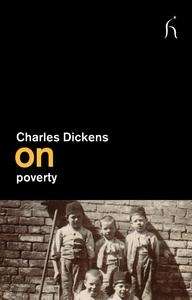On Poverty

Editorial Hesperus
Fecha de edición marzo 2013 · Edición nº 1
Idioma inglés
EAN 9781843916208
120 páginas
Libro
encuadernado en tapa blanda
Resumen del libro
Dickens is famous for his moralising and the entreaties within his fiction to help the poor, and characters such as the Cratchit family, or little Joe in Bleak House have become iconic figures in our recollections of the nineteenth century's working class struggles. This collection includes articles such as 'A Poor man and his beer' and 'Walk in the Workhouse' based directly upon Dickens' own involvement and experience of walking round the more derelict areas of London and England to meet the poor firsthand and report their plights to the reading population, as well as considering Dickens' own charitable work, such as his involvement in setting up a refuge for prostitutes, as defended in his article 'A Home for Homeless Women'. In contrast to his personal nostalgia for the innocence of childhood, Dickens tirelessly argued against those who hearkened back to the good old days, instead flying the flag for evolution and development.
Biografía del autor
p Charles Dickens nació en Portsmouth en 1812, aunque pasó la mayor parte de su infancia en Londres y Kent. No empieza a acudir al colegio hasta los nueve años. Tras el encarcelamiento de su padre por el impago de deudas, su familia se traslada a la cárcel, ya que la legislación de la época permitía que los familiares compartieran la celda del moroso. El joven Dickens se ve obligado entonces a trabajar como operario en una factoría de betún para zapatos bajo duras condiciones laborales. Con el dinero que ganaba pagaba su propio hospedaje y ayudaba a su familia. Tras una formación prácticamente autodidacta, consiguió un puesto como secretario de un abogado en 1827, y poco después se convirtió en cronista parlamentario. Gracias a este oficio pudo publicar en 1833 su primera obra, i Esbozos /i , bajo el seudónimo de Boz. En esta línea continuó publicando, hasta que su obra i Los papeles póstumos del Club Pickwick /i lo convirtió en un autor aclamado mundialmente. Que la mayoría de su obra fuera publicada en entregas periódicas le daría gran popularidad e influencia entre el público inglés. Viajó por Europa y Estados Unidos, donde era muy conocido, aunque tras la crítica que realiza del Nuevo Mundo en su novela i Martin Chuzzlewit /i , se ve rechazado por la sociedad norteamericana. Entre sus obras más célebres se encuentran i Oliver Twist /i , i Canción de Navidad /i y, sobre todo, i David Copperfield /i , del que vendería en poco tiempo más de 100.000 ejemplares y que resume de modo magistral sus penurias infantiles. En el ámbito personal disfrutó de un fecundo matrimonio que le aportó diez hijos pero que finalmente se vio perturbado por las relaciones extramatrimoniales que Dickens mantenía con una actriz de teatro. Hombre enérgico y comprometido, compaginó su extensa labor literaria con otros campos de la cultura tales como la dramaturgia y la edición (fue fundador del semanario Household Words, donde publicaría por entregas dos de sus obras más conocidas, i Casa desolada /i y i Tiempos difíciles /i ). Administró diversas asociaciones caritativas y luchó por conseguir reformas sociales que favorecieran a las clases obreras, así como por la abolición de la esclavitud en Estados Unidos. Murió en Gadshill Place, el 9 de junio de 1870, tras sufrir una apoplejía. Fue incinerado, y sus restos reposan en la Esquina de los Poetas de la Abadía de Westminster.<br>








